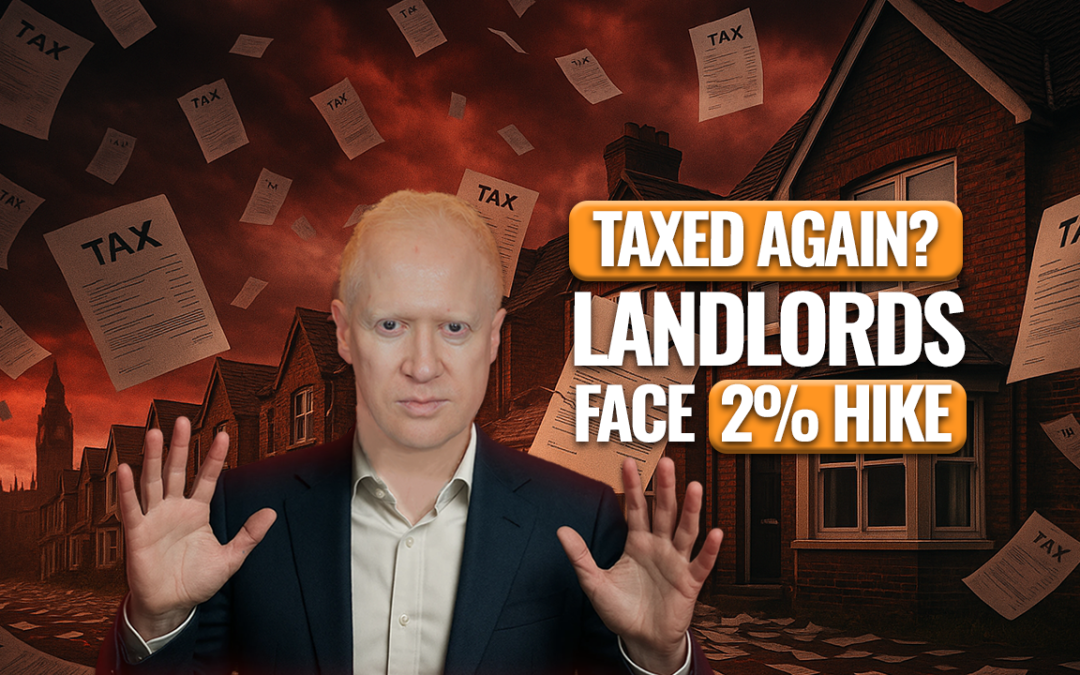In this blog, I’m going to answer the question, what type of tenants should you put into your HMO property? One of my favourite strategies is HMOs, Houses of Multiple Occupation, where you’re renting out individual rooms to individual people. Each person has their own contract and it can be very profitable. Normally they pay you one amount per month that covers the rent and the bill. You as the landlord pay the bills. Now there are different types of tenants. Depending on the location of the property and the type of property, you might have different types of tenants. So I thought it would be useful if i share the four main groups of tenants in HMO properties. I will be explaining a little bit about each of them and what you need to do. Hopefully you can identify what are the ideal tenants to put in your HMO property.
HMO Property for Students
So the first group of tenants for HMOs are students. Sometimes when property investors think about HMOs they think that all HMOs are for students. That’s not correct. When people go to university, they often go to a hall of residence or university flat for their first year. Then in their second, third, fourth year they move out to a student house. One thing to say, is that in many areas there is an oversupply of student properties. The reason is because they’ve built these new purpose built blocks which are nice and shiny, and students like to live in those. So there is an oversupply in many areas, but generally it’s the properties that either are not such good condition or they’re slightly further away from the university, those are the ones that remain empty.
If you’re thinking about putting students into your property, it’s very important that you’re close to the university and also that you have a very high standard of accommodation. When I was a student back in the early 90’s I lived in some houses that were really not great and that was the average standard at that time. Standards are now very high for students. Sometimes you might get the parents who are dropping the kids off at university, come and look around the house. They’re checking it out to see if it is good enough for their son or daughter to live in. This is why it has to be a very high standard of property.

Students in Houses of Multiple Occupation: Key Factors
There are some key factors you need to understand about students. You have got to make sure you get their academic year correct. Students will typically look for where they’re going to live in their second, third, or fourth year. They’ll do it in the second term of their first year at university. They will arrive at the end of September, beginning of October. After Christmas, when they come back, at the beginning of second term, they’ve decided who they are going to live with. They walk around with a group of friends looking for properties to rent. Therefore you need to make sure your property is available in January. Even though they’re not actually going to move in till July, August, September of that year.
A lot of people make a mistake in that they get a property ready. They say, “I’ll have it ready for August, September when the students start.” Most of the students have already found where they’re living by then. There will always be some students looking in September for places because maybe they’re a bit late to come into university. Maybe they have fallen out with their friends and they don’t live with them anymore. So you will always find some students at that time of year but most student tenancies have already been set up beforehand. What you also need to think about, when it comes to students, is that if they book early they tend to come as a group. Unlike most other HMOs, you have to get them onto one contract where they’re all jointly liable and several for that rent. What it means is, if one of the students falls out of university, the other students either have to pay that person’s rent. Alternatively, they normally find another friend to come and live with them in their house.
The other thing about students is if they’re full-time students they are exempt from council tax. They don’t have to pay as long as they apply to the local council and prove they’re full-time students. The final thing about students is, very often because they come as a group they will pay the bills themselves. So you don’t have to pay the bills which normally in an HMO you would do. There’s one of the real benefits. So when you’re looking at, should I rent to students or one of the other groups, you’ve got to understand what you are looking at. You generally don’t pay the bills. If you want to learn more about students and particularly university students – visit the university accommodation office. You can advertise that property at the accommodation office as well. So that’s the first type of tenant.
“By the way, you can mix young professionals and working people together as tenants. That’s perfectly fine, but you wouldn’t want to mix students with them, and you wouldn’t want to mix them with the fourth group of tenants. “
Young Professionals
Many people think that’s it, but there are some other types of tenants as well. So the second type of tenant is what we call a young professional. This is someone that might be mid twenties, early thirties. They’ve been to university, they’ve got a career, they’ve got a vocation. Maybe they’re a doctor, they’re a solicitor, they’re an accountant. they’re an engineer, they’re a nurse, they’re a teacher. They’ve got a qualification and a vocation. What that means is they’ve probably been to university. Now that’s not saying they’re better than people who haven’t been to university, it’s just that because they’ve probably lived in a shared house before. Presumably they’ve also liked it. So they don’t mind living in a shared house once they’ve finished university.
If someone is moving to a new city for a new job, they may not know anyone and moving into an HMO is a great way to get an instant social life. They can connect with some people straight away. It’s far cheaper and more cost-effective living in a HMO or a shared house than it is living on their own where they’re not only paying the rent, but also paying all the bills. So that’s the second type of tenant which is a young professional.
Working People
The third type of tenant is very similar to a young professional. They’ve got a job, they’re working. That might be in a factory, shop, or an office, but they haven’t necessarily been to university. Now, nothing wrong with that at all. What it means is they haven’t necessarily lived in a shared house before. Maybe they’d been living at home with mum and dad. Or maybe mum and dad don’t want them to live there anymore. So they kind of go out and rather than going to their own flat, which is more expensive, they go into a shared house. By the way, you can mix young professionals and working people together as tenants. That’s perfectly fine, but you wouldn’t want to mix students with them, and you wouldn’t want to mix them with the fourth group of tenants.

People Receiving Local Housing Authority Benefit
The fourth group of tenants is people who are claiming benefits. People who are receiving Local Housing Authority Benefit are often single and on their own. They just want a house, a room in a shared house. They can be more work and sometimes they have a few challenges. Sometimes they’re not so good with their money. I am generalising here, obviously, by the way I’ve got some fantastic tenants who are long term tenants in Single Lets. I couldn’t be happier with them. I’ve therefore got no problem with people being on benefits. But just to say, imagine you’ve got a house full of people who are around all day. They can aggravate each other. It is a lot more work and hassle managing a property with tenants who are on LHA benefits. Their benefits could get cancelled, and you’ve got to help them to get those benefits coming through again.
If you want to help those kinds of people, what many of my students do is they’ll take their property, they’ll rent it to a charity who specialises in providing accommodation to people on benefits. It’s great that many of my students do this. You get to help people on benefits who may not otherwise be able to find accommodation. The charity will do a Rent to Rent with you so will give you a guaranteed rent, often at the full market and they’ll cover all the bills as well. So sometimes you can make more money by renting your property to a charity in this way.
By the way I don’t manage my HMOs. Other people do it for me. It is a bit more work than a Single Let property but actually makes so much more money. You can afford to pay someone else to do it. That’s why I spend my time doing this training and mentoring, because that’s what I love to do. For me, that’s what property investing is all about. It’s not so much about having the property. It’s about the income you can get from it to replace your job or your business, which means you then have the freedom and choice to spend your time doing whatever you want to do.
So those are the four different types of tenants you get into HMOs. The type of tenant you put in these, really depends on the location. Remember, students have to be very close to university. Young professionals want great transport links, local facilities and amenities as do working people. People on benefits aren’t so fussy because they often don’t have a choice. So location is not so important for them.
One of the key things about HMOs or the biggest mistakes people make is, not making their HMO better than the average on the market. There is an oversupply in many areas but it’s an oversupply of very average stock. If you have a really good HMO you should easily be able to attract tenants into that property and minimise your void periods.
So you have students, you have young professionals, you have working people and LHA Those are the four main types of tenants in your property. Remember the tip about not mixing your tenant types. You want to decide based on the location, based on the facilities, amenities. Who is it best to target to get into this property as a potential tenant. That’s how you decide what type of tenants you put into your HMO. I do hope that’s been really useful.
If you want to learn more about Houses of Multiple Occupation, and how you can really profit using them, I’ve got some extra online training that I like to give you access to. All you have to do is click in the link below this blog. It will really help you to save a lot of time and give you some real shortcuts, making sure you get the next HMO property much quicker. Remember to invest with knowledge, invest with skill.










